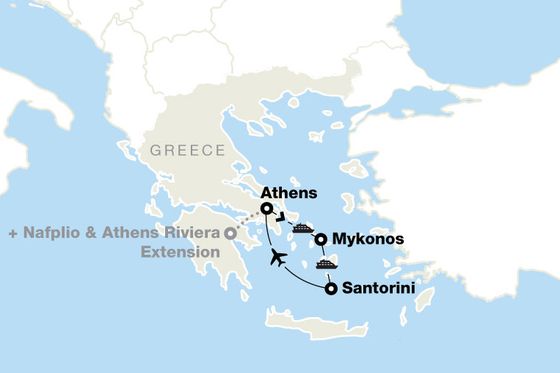A peek at Patagonia’s national parks
Our Director of Product Development, Lael, shares why the beauty of Patagonia’s national parks are a can’t-miss.
The Patagonia region of South America is a place of striking natural beauty, wide-open expanses, and unspoiled wilderness. Covering a vast area of about 260,000 square miles (roughly the size of the state of Texas), the region promises a wide spectrum of landscapes from lakes, temperate rainforests and steppe grasslands to ice fields, glaciers and mountains. In addition to offering a sense of solitude and an escape from the hustle and bustle of modern life, Patagonia is one of the most pristine, sparsely populated areas in the world.

A brief history
Local Patagonian culture has its roots in the same frontier culture as the American West. The area was originally inhabited by a variety of nomadic indigenous tribes (also known as the Tehuelche People), in addition to many sub-groups, including the well-known Mapuche people. Similar to the American West, the native people of Patagonia were decimated by disease, war, and land-grabs by the Argentine and Chilean governments.
Today, only small hints at these cultures remain in Patagonia. In its own version of manifest destiny, much of the Patagonian region was settled by immigrants from other parts of Argentina and Chile, as well as settlers from as far away as Wales and England. Those who stayed set up estancia ranches to raise sheep and produce wool. Today, Patagonia is home to millions of sheep as a result of this long-established gaucho culture. One of the signature experiences of any trip to Patagonia is enjoying a traditional lamb barbecue cooked over an open fire, while enjoying hot Yerba Mate tea drunk from a filtered metal straw—the preferred method of enjoying this traditional refreshment.
Although Patagonia has a wide variety of incredible destinations, two national parks in Southern Patagonia—Torres del Paine in Chile and Los Glacieres in Argentina—stand out for their natural beauty and epic landscapes. These two parks offer a chance to disconnect and be awed by the power of the environment.

Torres del Paine National Park, Chile
As you approach Torres del Paine through the rugged steppe grasslands, the beauty of the park soon becomes apparent. Views of the three granite rock spires in the Paine Mountain range are some of the most stunning sights you’ll see in South America, but this is just the beginning. From each turn of the road to every step along the park’s many famed paths, a new sight-line of lakes, glaciers and mountains is revealed. The steady flow of melt-water and the rich mineral contents of glacier run-off create a series of large lakes in Torres del Paine, each with its own shade of color ranging from dark grey to electric blue. Every vista is completely unique.
The park is also home to an incredible diversity of flora and fauna. The Chilean firebush comes to full bloom in the spring and provides a remarkable red contrast against the blue, white and grey of the nearby lakes and glaciers. In addition to these fiery bushes hugging the trail, Torres del Paine has large sections of old-growth forest, which are home to the endangered Heumul deer, an animal featured on the Chilean coat of arms. The park also has large populations of pumas, guanacos (a cameloid relative to the llama and alpaca), foxes, rabbits and the Andean condor, one of the largest birds in the world and one that has been brought to the edge of extinction elsewhere in South America.
Whether you’re a trekker, hiker, photographer or nature-lover, a visit to Torres del Paine National Park in Chile will not disappoint.

Los Glacieres National Park, Argentina
Los Glacieres National Park, a UNESCO-recognized biosphere in Argentina, is comprised of a much larger land area than Torres del Paine. It’s predominately covered by the Patagonian Continental Ice Cap, a continuous ice field that created 47 large glaciers which flow into the Pacific fjords to the west or the eastern glacier lakes, whose rivers eventually reach the Atlantic Ocean.
The highlight for any traveler to Los Glacieres is a visit to the park’s stunning glaciers, ice fields and large glacier lakes, including Lago Argentino and Lago Viedma. Although there are many nearby glaciers, Perito Moreno is one of the most beautiful and accessible in the park. It can easily be reached by either a boat trip to the headwall or along a series of boardwalks that separate the glacier terminus into northern and southern sections. The scope of the glacier is massive, with its end stretching to more than three miles wide and 550 feet deep. The majority of the glacier face remains unseen, but the visible headwall still towers 240 feet above the surface of Lago Argentino. Whether approaching the headwall by ferry or peering over the railing of the glacier’s many viewing platforms, the sheer magnitude of Perito Moreno is simply awe-inspiring.
Perito Moreno is constantly active, changing color from white to deep blue depending on the angle of the sun and the amount of cloud cover. Every few minutes, you can hear a massive boom and, if you’re lucky, see pieces of the glacier cave into the lake and form a new iceberg. While most of the world’s glaciers are in rapid retreat, this is one of the few in the world that is either stable or still growing.
Both Torres del Paine and Los Glacieres remind us of the astonishing beauty and power of the natural world. A visit to either one of these national parks will impress, but if you’re able to visit both in one trip, it will be the trip of a lifetime. If you’re interested in landscapes and wildlife, Patagonia is a destination that will make you want to go back year after year!



































































































